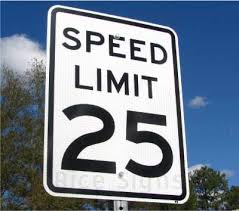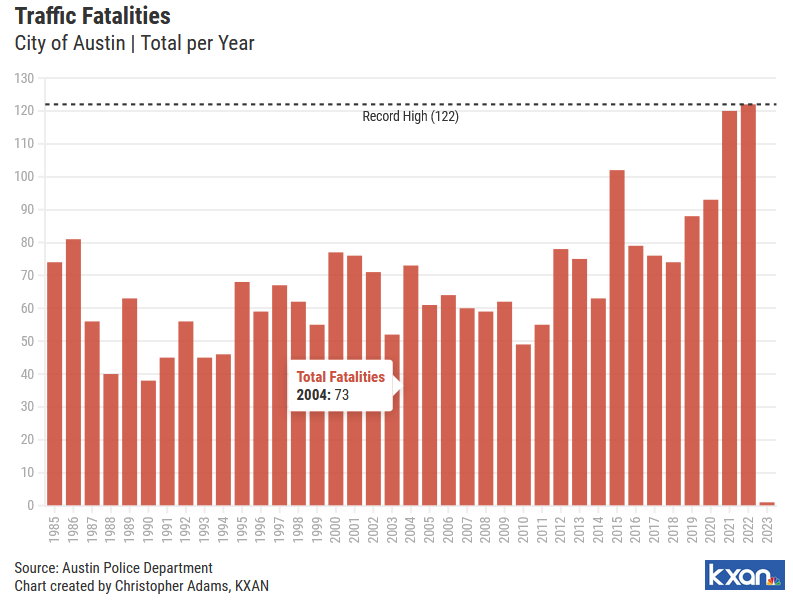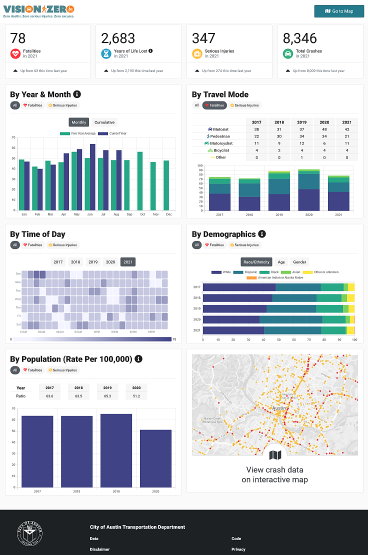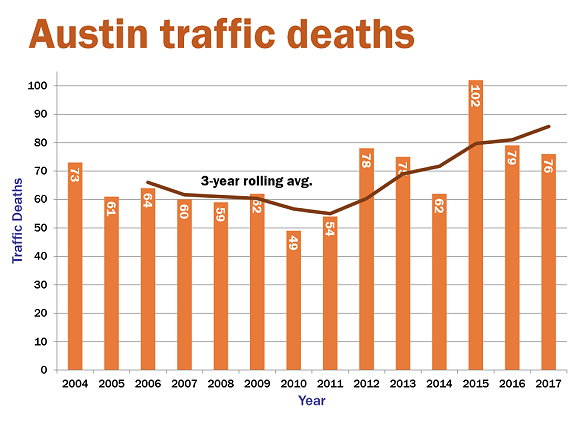 Over the next several months, Austin drivers will start seeing posted signs alerting them to reduced speed limits on certain residential and urban core streets. The reductions, aimed at improving traffic safety, were unanimously approved by the City Council earlier this month.
Over the next several months, Austin drivers will start seeing posted signs alerting them to reduced speed limits on certain residential and urban core streets. The reductions, aimed at improving traffic safety, were unanimously approved by the City Council earlier this month.
Data collected by the Vision Zero program showed that speeding is the leading cause of a quarter of deadly traffic crashes, making it one of the top four behaviors that contribute to most traffic deaths in Austin, along with failure to yield, distraction and intoxication. In 2018, 74 people died on Austin roads.
“If you drive more slowly, you are better equipped to respond to conditions, and the more people can pay attention to their driving the safer everybody will be,” said Council Member Leslie Pool, whose District 7 in North Austin includes high-traffic roads such as MoPac Boulevard (Loop 1), Interstate 35 and Parmer Lane. “As our city has grown, we are not really a small town anymore, and we’ve seen an uptick in vehicle accidents, collisions and conflicts, and that’s preventable.”
Traffic patterns and injuries during the coronavirus pandemic indicate that speeding remains an issue, even while average traffic volumes are down about 50% from early this year. Overall crashes are only down about 20% and Austin has seen roughly a 15% increase in serious injuries, according to the city’s Transportation Department.
“One takeaway from this is that people who continue to drive seem to be getting into serious car crashes more frequently, which is likely tied to many drivers choosing to go at faster speeds than normal,” Transportation Department spokeswoman Susanne Harm said.
The planned changes are based on a year-long engineering study of speed limits on city roadways conducted by the city’s traffic engineer. The changes will affect three kinds of roads:
· Neighborhood streets — mainly residential and typically about 36 feet wide or narrower — which will have posted speed limits of 25 mph. Some neighborhood streets wider than 36 feet also will have reduced posted speed limits.
· High-capacity urban core roads, which are bounded by U.S. 183, Texas 71, and MoPac Boulevard, will be posted at 35 mph or less, with a few exceptions. Such roads include portions of Lamar Boulevard in Central Austin, parts of Menchaca Road in South Austin or Springdale Road in East Austin.
· Downtown streets, including most streets within the area bounded by North Lamar Boulevard, Martin Luther King Jr. Boulevard, I-35 and Lady Bird Lake will be posted at 25 mph, while Guadalupe and Lavaca streets, MLK, 15th and Cesar Chavez streets and Lamar will be posted at 30 mph.
Joel Meyer, a transportation planner with the Transportation Department, told the American-Statesman the majority of changes will be on neighborhood streets where the speed limit will change from 30 mph to 25 mph. However, he said a number of streets with higher speed limits will be reduced by 5 or 10 mph.
The city also will revamp some roadways by narrowing lane widths or reassigning portions of the street for biking or parking as a way to encourage slower driving. The city has published an interactive map that shows where speed limit changes will occur.
No other new resources or initiatives are going toward enforcing the speed limit reductions, Meyer said, but the department is encouraging police to give warnings rather than citations while people adjust to the new limits.
The project will also make speed limits on similar roads more consistent throughout the city, according to Harm.
“It will make it easy to know what the speed limit is,” she said. “That will help us lower the speed overall and help enforcement know if someone is speeding.”
City Council Member Ann Kitchen, whose District 5 includes West Gate Boulevard and Slaughter Lane, said slower commute times was not a concern when weighing this proposal. Most speed limits are being reduced by 10 mph or less, which she said only increases total trip time by a minute or two.
“Really that is a small price to pay for saving someone’s life,” she said.
Speed limit reductions on individual roads aren’t new, Kitchen said, but this is the first time the city has approached the problem with such a wide scope.
“We’ve had one-off changes over the years,” she said. “This is really a chance to really look at it in a comprehensive way.”
Kitchen expects more analysis going forward to find other streets deserving of speed limit reductions, starting with neighborhood streets between 36 and 40 feet wide, which will be looked at in the next year. She encouraged those with concerns about a street’s safety to reach out to the City Council.




